Guildhall. City of London: Part 1
More songs have been written and recorded about New York than any other city. ‘New York, New York’ is one of many. Starting from ‘’A’ Train Lady’ by Mink DeVille and ending at ‘Zulu Bronx River’ by Afrika Bambaataa there are over 3500 entries on the Wikipedia list for NYC.
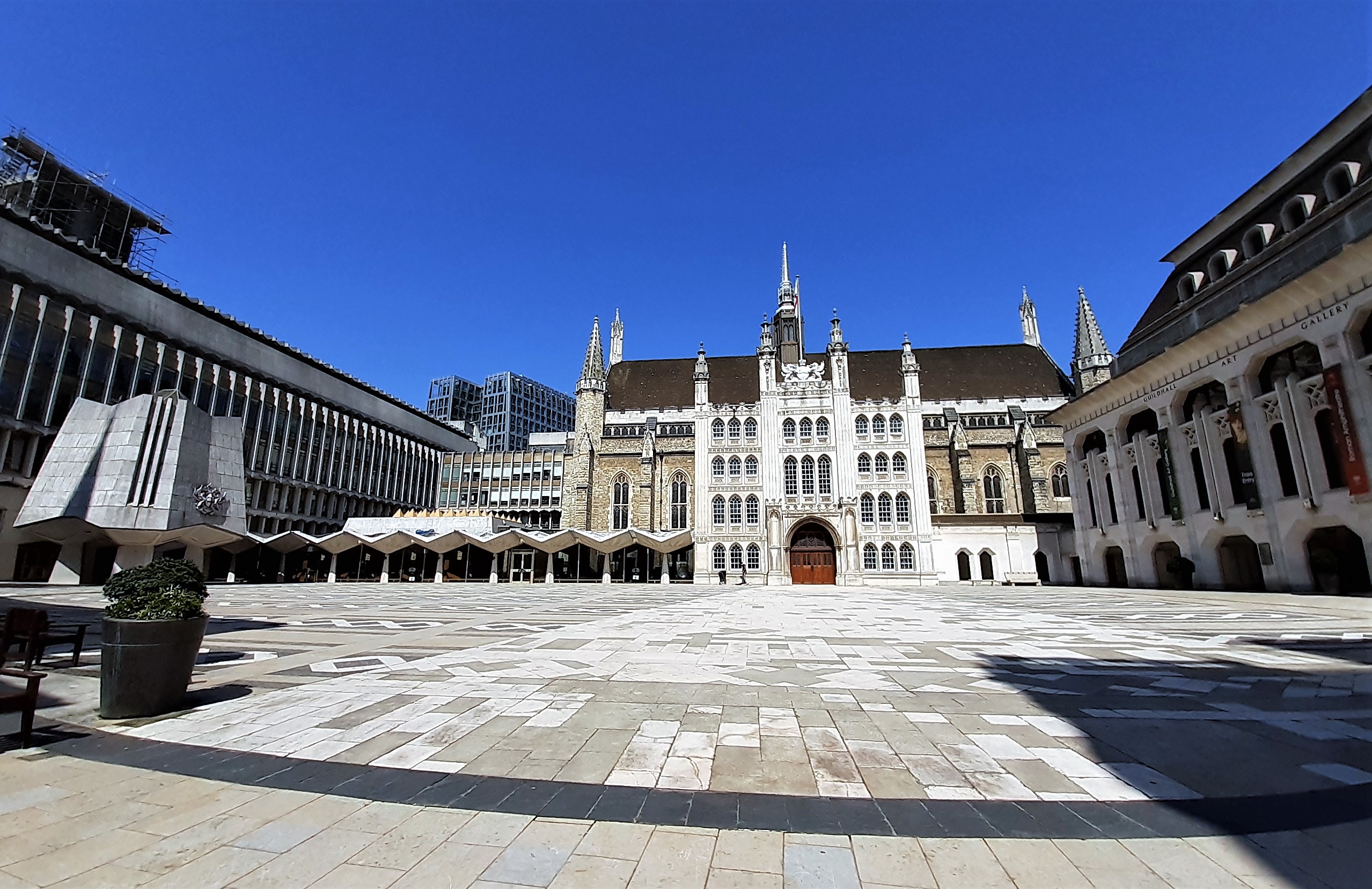
Guildhall. City of London.
London has about 2400 songs on its equivalent Wikipedia page from ‘’A’ Bomb in Wardour Street’ by The Jam to ‘Yugoslavian Expedition To Brentford’ by Loop Guru. The Paris list comes in at approximately 1400 songs.
Books however are a different matter. I would speculate that London has had more books written about it than any other city (factual titles and fiction). The list would be too big, too endless, perhaps running into tens of thousands of entries.
I mention this because a few years ago I willingly joined the long list of London obsessive’s to have written a London history book. London is remarkable because even though I, with my co-author, found something new to write about there is still so much untapped London history waiting to be documented and set down.
Our book is called ‘Guildhall. City of London’ and it’s the first new history about the oldest surviving secular building in the City of London in over a century (Pen and Sword, 2018). Previous histories of Guildhall had been written in the late 1800s and early 1900s. A lot has happened since then, most significantly the Second World War. Damage caused by bombing in December 1940 has resulted in the mix of ancient and modern architecture we see in the Guildhall complex today.
What is a Guild?
Guilds are trade, craft or merchant associations originating in the early middle ages. Their authority was usually limited to a region or city. The first to be officially known in the City of London was the Worshipful Company of Weavers who received their charter in 1155.

Agas Map 1560 (detail): the Great Hall in the centre.
A couple of nomenclatures do need explaining here. Guilds became known as ‘Worshipful Companies’ because members tended to worship together, often in their own chapels, as well as living and trading close to one another. Guilds are also known as ‘Livery Companies’ because each guild would design its own uniform and insignia and these were, and are, called liveries. Depending on seniority members are called either Freemen or Liverymen.
Guilds were much more than proto trade unions. They controlled membership and the right to trade through regulation, apprenticeships, standards, pricing and punishment. Traders of shoddy goods or rotten foodstuffs would be punished by their own guilds. Guilds were of course for men only and they would pay for a member’s funeral, alms for their widows and education for their orphans.
Guilds developed into the ruling elites of the City of London and their collective governance of the City has been based in Guildhall for hundreds of years. Some guilds were more powerful than others. In 1515 the Order of Precedence created the Great Twelve who continued to dominate City life for centuries to come. The Great Twelve are:
- Mercers (general merchants)
- Grocers (spice merchants – originally called the Pepperers)
- Drapers (wool and cloth merchants)
- Fishmongers (sellers of fish and seafood)
- Goldsmiths (bullion dealers)
- Skinners (fur traders)
- Merchant Taylors (tailors)
- Haberdashers (clothiers in sewn and fine materials, silk and velvet)
- Salters (traders of salts and chemicals)
- Ironmongers
- Vintners (wine merchants)
- Clothworkers
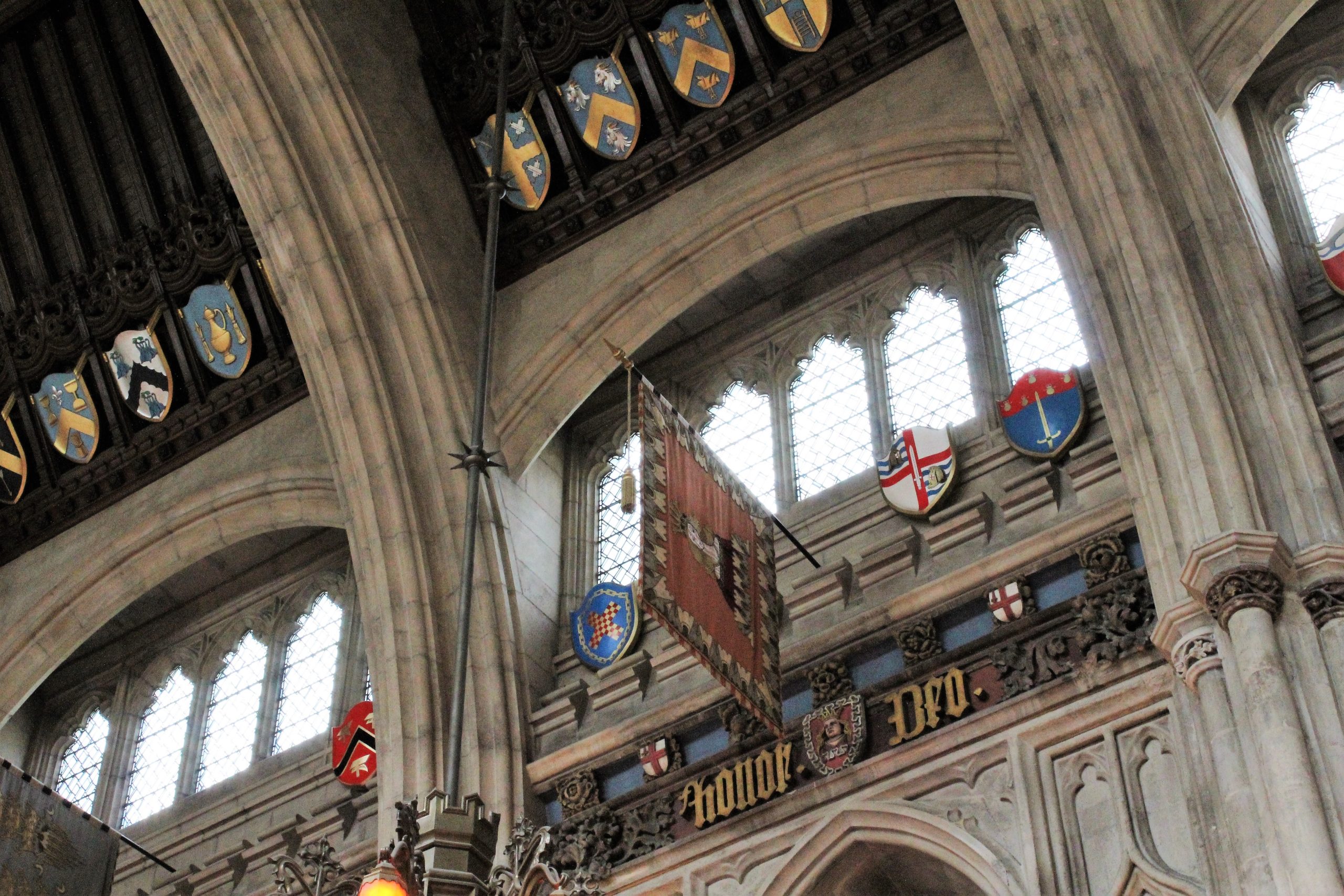
Great Hall: Mercers Banner and motto ‘Honor Deo’
Merchant Taylors and Skinners disputed their positions and it was decreed that they should swap places every year. The phrase ‘to be at sixes and sevens’ is supposed to derive from this ancient wrangle. Lord Mayor’s of the City of London always progress through the guilds. Four times Lord Mayor Richard Whittington was a Mercer. Henry Fitzailwyn became London’s first mayor in 1189. Almost up to this date kings appointed their own reeves to oversee City governance. The City still has two Sheriff’s (shire reeves). Nowadays they are not appointed by the monarchy, but they will both be Liverymen and one will be acclaimed as the next Lord Mayor.
The wealthier guilds built their own Livery Halls and thirty nine are located within the City of London today. Many guilds still have direct connections to their original trade or craft. The Assay Office for the hallmarking of gold, silver and platinum is still within Goldsmiths Hall. Their London stamp is the leopards head. My first guiding qualification was through the Worshipful Company of Hackney Carriage Drivers, when I earned accreditation as a taxi driver guide (see footer).
Today most guilds are involved in charity and endowments; upwards of £45 million pounds is donated every year. Women are active as Freemen and Liverymen in all Worshipful Companies and there have been two women Lord Mayor’s, so far. In 2014 the Art Scholars became the 110th Worshipful Company. Numbers? It’s thought there are about 26,000 Liverymen and 15,000 Freemen.
Guildhall, Gresham Street, London EC2.
Guildhall is the town hall of the City of London. It’s where guild members would meet to govern the City. The City of London (often called the ‘Square Mile’) is the oldest part of London; it’s the original London, established by the Romans in 47AD and known to the Roman world as Londinium. The oldest surviving part of Guildhall is called the Great Hall and it dates back to the early 1400s.
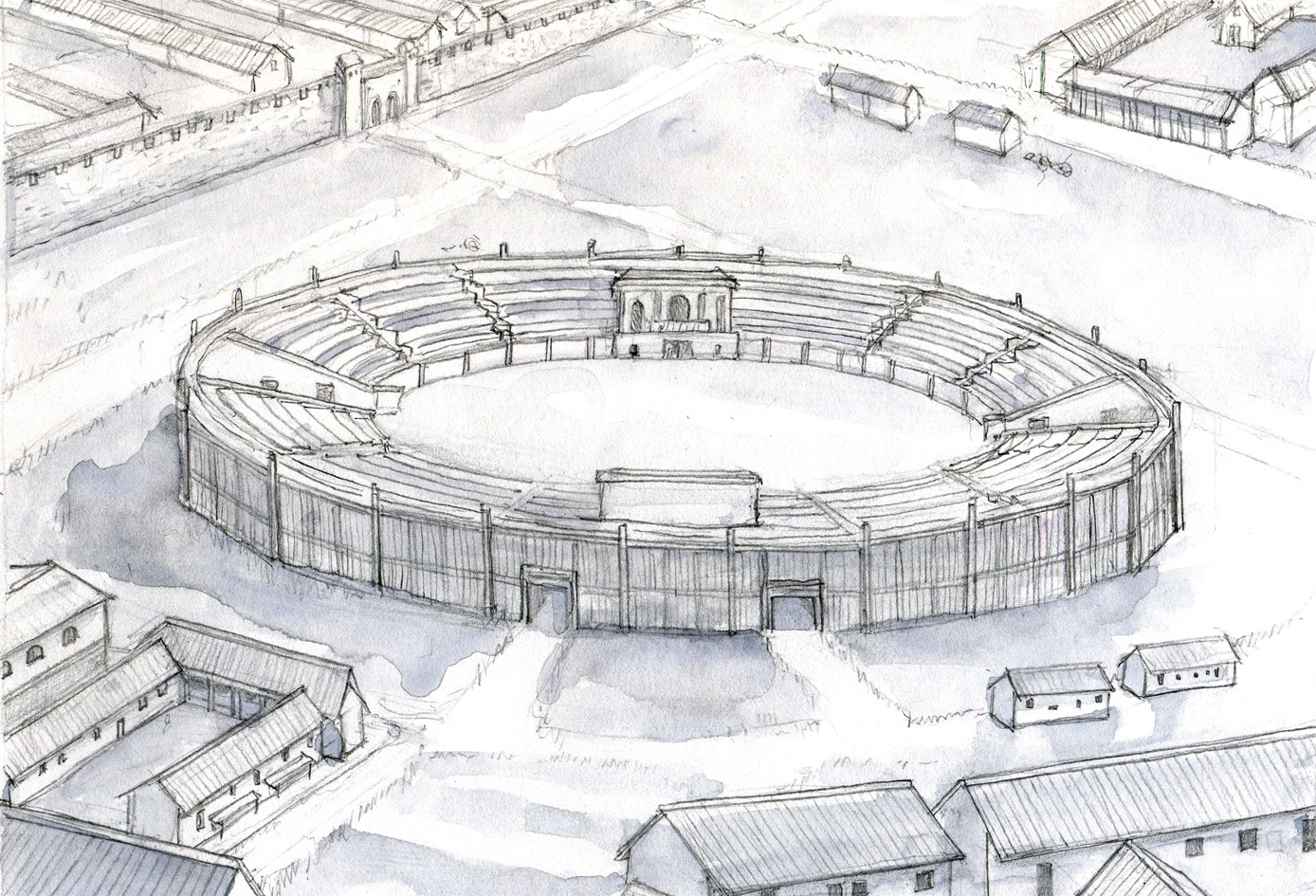
Londinium’s Amphitheatre (Mark Carter)
Since the late 1980s we have known that Guildhall sits pretty much where the Roman amphitheatre stood (its remains were discovered under Guildhall Art Gallery). We also know that the real experts still don’t know much about Londinium immediately after the Roman period. But we can speculate that the land around the amphitheatre was left reasonably even and hard, and not too close to any of the brooks and streams that flooded or swamped other City locations. It was also in a central and accessible location.
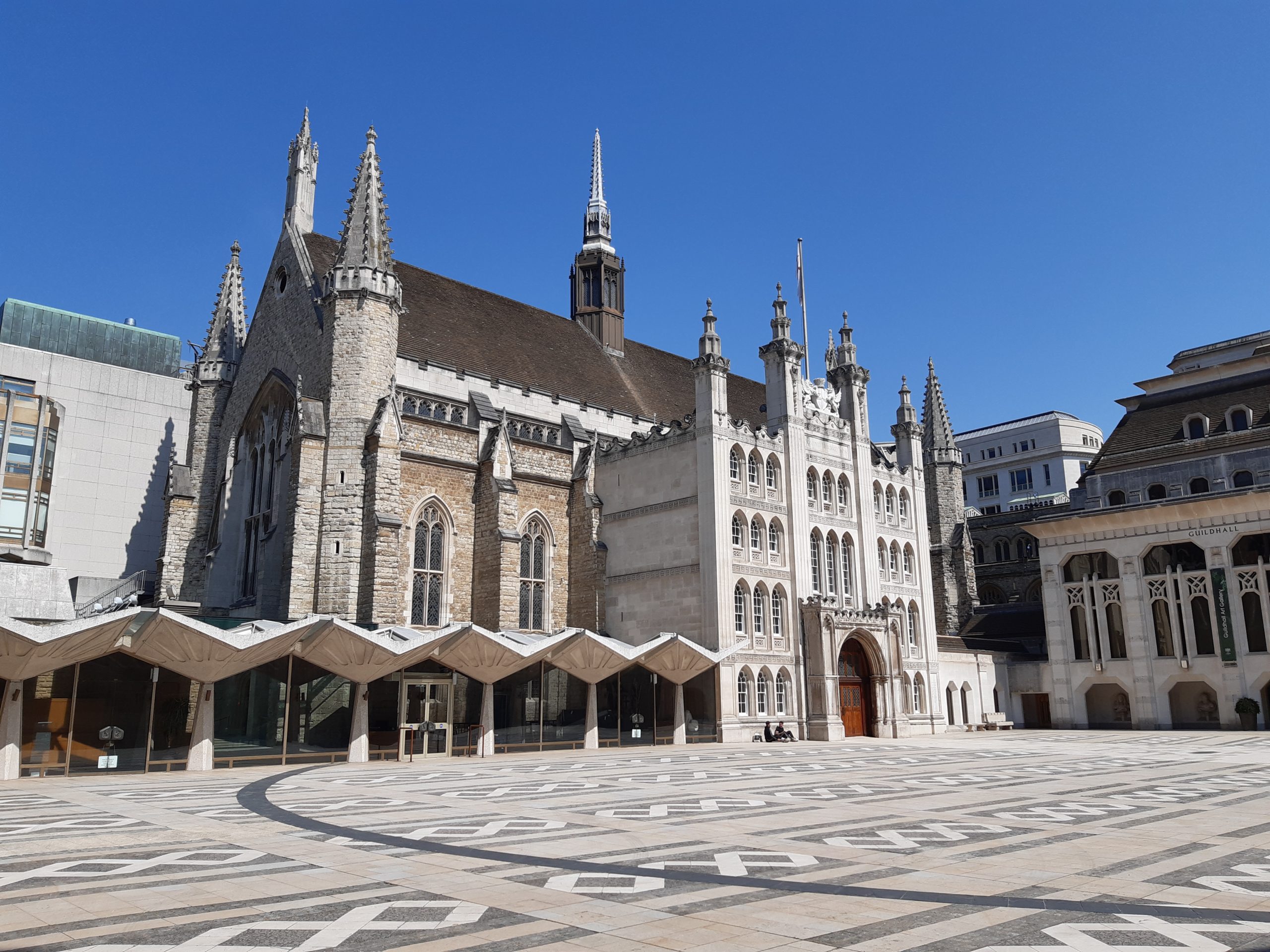
Guildhall: the Great Hall.
There are thoughts that Saxon folkmoots, or meetings, may have been held here, perhaps because of this favourable terrain. Following King Alfred’s refortification of the City as a bulwark against the Vikings in the late ninth century it seems to have been the location for a Court of Hustings, possibly to collect taxes and as the City’s first post-Roman centre of administration. The word ‘guild’ derives from Old English ‘gield’ or High German ‘gelt’ which means ‘pay tribute’.
There are various mentions of a guildhall in late period Norman records. We can only assume it was on or near to the present site. During the reign of King Richard I there was a powerful mayor called Henry Fitzailwyn, and by the time of Richard’s brother King John, in the early 1200s, an administration building is recorded. By the late 1200s there is definitely a Chamber of Guildhall on the present site, as well as the first chapel and records of later alterations.
It’s not long before we arrive at 1411 and construction of the present Great Hall. From having almost no reliable historical records, from here on information becomes easier to find. I’m not one to complain, but eventually there’s too much information. Building work and redevelopment didn’t stop until the late 1990s.
The next blog post will explore how, over the past six centuries, Britain’s finest architects have created the Guildhall we see today.
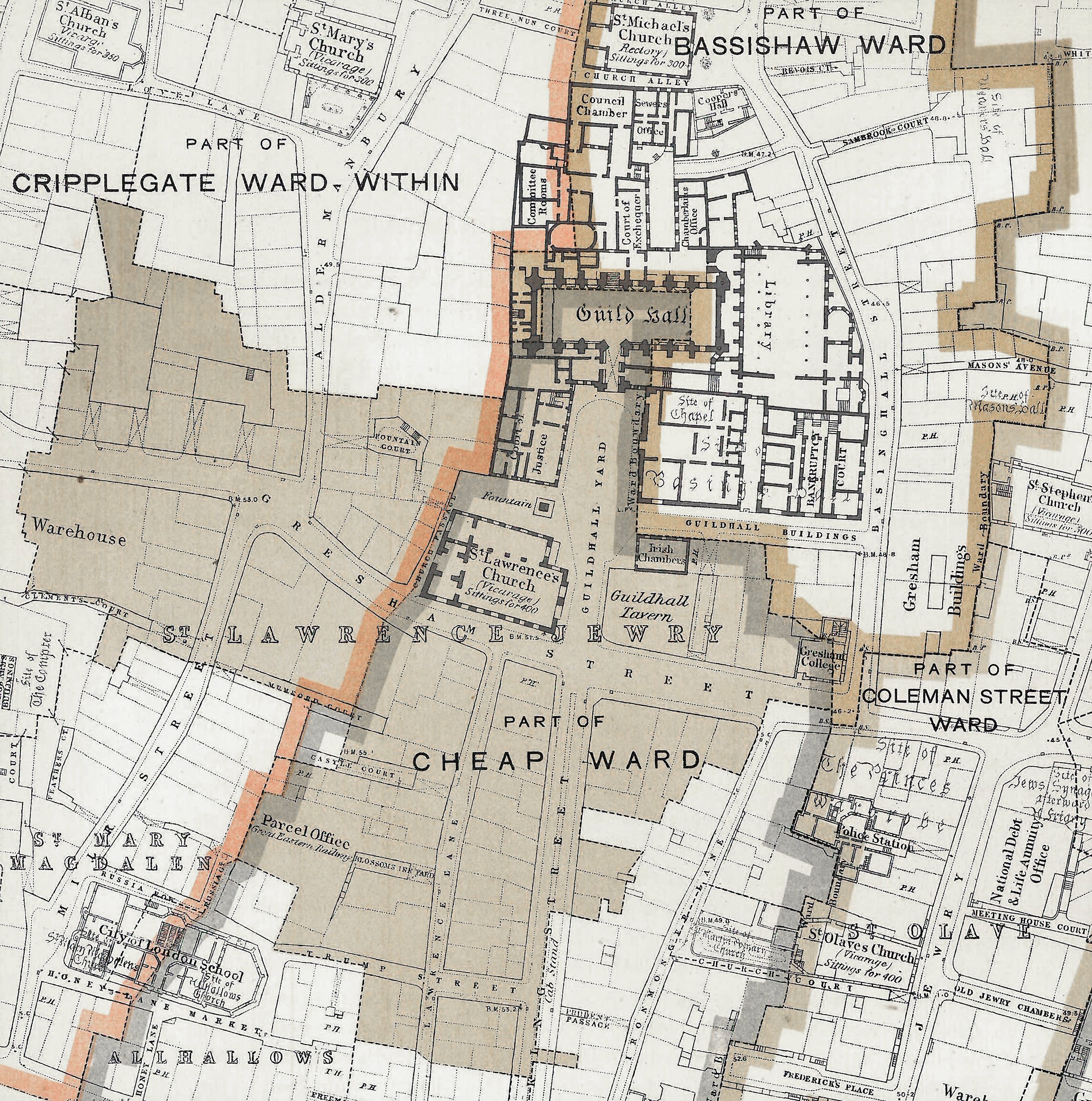
Cheap Ward 1880s (the City of London is made up of 25 wards).
